
Pain is one of the most unrecognized and untreated conditions.
Pain has become one of the most common reasons for people reaching out for medical care, and the pain they experience can be caused by a variety of reasons, such as:
- Chronic-malignant pain that accompanies diseases such as cancer, multiple sclerosis, end-stage organ failure, HIV/AIDS and chronic vascular insufficiency.
- Chronic non-cancer pain such as musculoskeletal pain, visceral pain, and neuropathic pain (nerve damage)
- Post-operative conditions (such as failed back surgery)
- Trauma-related conditions/injuries (such as car wrecks and sports injuries)
- Age-related conditions (such as arthritis and degenerative joint disease)
Pain, when left untreated, can severely impact one’s quality of life socially, psychologically, physically and financially, while potentially causing other conditions such as decreased concentration, reduced sleep, impaired immunity, decreased mobility, sense of depression and social isolation, sense of being a burden on others, acute anxiety, etc.
Pain medication is the most commonly used treatment method for pain, although effective pain care, pain management, and pain treatment often need more complex, multi-modal care to offer long term benefits and relief.
What are the different types of pain that are treated at Advanced Pain Care?
Advanced Pain Care provides comprehensive care for different types of pain through focusing on managing and treating pain as a condition. Here are some of the acute and chronic pain conditions that are diagnosed and treated at Advanced Pain Clinic:
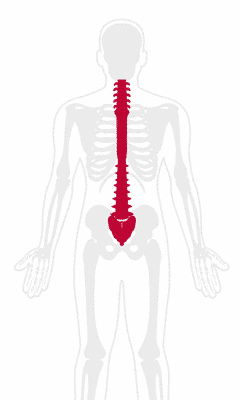
Back Pain
Back pain is one of the most common reasons for doctor visits in the United States, second only to the common cold. Over 80% of adults report suffering from back pain at some point in their lives. Pain can range from a dull ache to sharp, shooting spasms that can completely hamper movement.
There are many underlying causes for back pain, such as:
- Muscle sprains/strains
- Inflamed joints
- Pinched nerves
- Weak muscles
- Sciatica
- Herniated spinal discs
- Spinal stenosis
- Osteoporosis
- Osteoarthritis
- Infections
In many cases, pain will expand to other areas, radiate to the extremities, and/or cause additional symptoms, such as numbness, tingling, or weakness. With the underlying causes of the pain being so diverse, diagnosis and timely treatment can often be difficult. This is why getting evaluated by a pain care specialist is recommended.
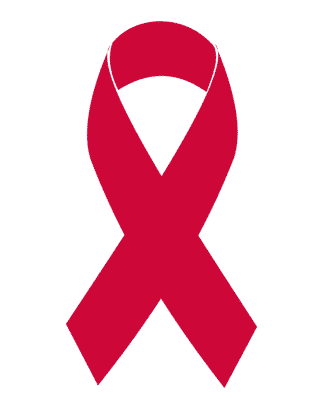
Cancer Pain
With over 100 different types of cancers in the human body, cancerous growth or malignant tumors can cause severe pain when they grow and spread as this process destroys tissues and puts pressure on the nerves, bones, and organs. The tumor also secretes different toxins that can cause damage to the body structure while causing severe and debilitating pain.
Often, the treatment for cancer can cause as much pain as the tumors. The most common treatments – radiation and chemotherapy – are known to have severe pain as a side effect. Surgical intervention to remove tumors can also cause pain during the recovery period.
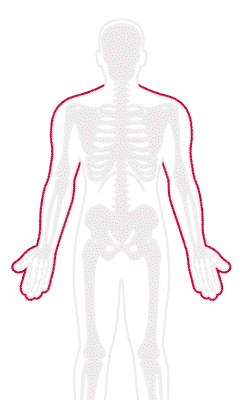
Complex Regional Pain Syndrome
Complex regional pain syndrome (or CRPS) is a chronic condition that causes intense pain in different parts of the body, especially the limbs. CRPS is a type of nerve damage that can occur after trauma or surgery.
This condition’s symptoms often manifests as extreme pain, skin discoloration, inflammation, temperature change and a limited range of motion.
Type 1 CRPS is also known as reflex sympathetic dystrophy or RSD (or Sudeck’s atrophy) while Type 2 CRPS is known as causalgia.
Most common symptoms include:
- Painful reaction to light touch (allodynia)
- Swelling of the affected area
- Significant changes in skin color and texture
- Abnormal or excessive sweating near the affected area
- Local temperature changes (the affected limb is colder than the opposite one)
While extreme and prolonged pain, burning, throbbing, etc., are common, more severe symptoms include pain to non-painful stimuli, dysfunction of local blood vessels, over-sensitive nerve pain receptors, and more. These symptoms can vary in intensity and duration. In more severe cases, the symptoms can also include the inability to use limbs and regression of normal bodily functions (such as hair growth).
With symptoms so wide-ranging, diagnosis usually depends on the clinical findings, including evidence of sensory, vasomotor, sudomotor, and/or trophic changes.
For the pain care specialists at Advanced Pain Care, treatment of complex regional pain syndrome is usually multi-modal. Treatment usually involves pain medication, nerve blocks, use of spinal cord stimulators or procedures like sympathectomy to relieve symptoms of CRPS.
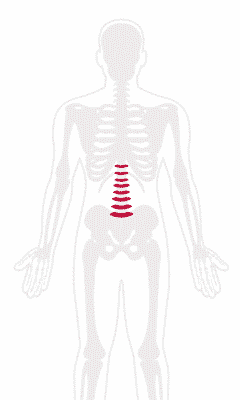
Degenerative Disc Disease
Degenerative disc disease is a condition when the tissue that forms the intervertebral disc begins to deteriorate. It is normal for discs to deteriorate through the aging process; however, experiencing severe pain because of this condition is not normal and should be evaluated by a medical professional. This condition becomes painful when degeneration in the spine’s discs causes an inability to properly absorb shock for the vertebrae in the spinal column. This can make flexing, bending, twisting, and any activity causing the spine to bend extremely uncomfortable and painful.
Symptoms of degenerative disc disease can vary from person to person. Some may experience no pain at all, while others may have weakness, numbness and/or debilitating pain that radiates to other regions. Serious cases of degenerative disc disease can apply pressure to the spinal cord and nerves that can lead to more pain and impaired nerve function.
As it is age-related, the process, once it begins, cannot be reversed. However, when diagnosed at the right time, pain care specialists at Advanced Pain Care can focus on measures to reduce the pain and arrest the damage from increasing. Pain control and management can be provided through non-surgical and surgical procedures.
Non-surgical interventions can include:
- Anti-inflammatory medications and pain relievers
- Steroid and facet joint injections
- Facet rhizotomy
- Intradiscal electrothermocoagulation (IDET)
- Spinal stimulation
- Back brace
- Heat/ice therapy
- Physical therapy
Surgical interventions to arrest the progress of the disease can include:
- Fusion surgery
- Discectomy
- Laminectomy
- Disc replacement
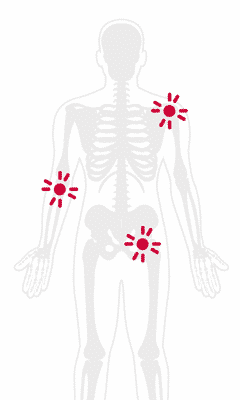
Degenerative Joint Disease
Degenerative joint disease (also known as osteoarthritis) is an age-related, wear and tear disease, which occurs when the flexible tissue at the bone ends (cartilage) gets worn out.
Chronic repetitive motion is the main cause of this condition. It results in severe inflammation and structural damage in the joints of the hands, neck, lower back, knees, and/or hips. Inflammation can also lead to pain and severe swelling. Over 50% of adults over the age of 65 in the US are affected by degenerative joint disease.
While repetitive motion is a major cause of degenerative joint disease, there are several others causes for osteoarthritis that include:
- Rheumatoid arthritis
- Hormonal disorders
- Post-joint trauma
- Osteoporosis
- Infections
- Genetic predisposition
- Muscular dystrophy
- Bone disorders
- Obesity
Physicians diagnose and treat degenerative joint disease with different treatment options such as non-steroidal anti-inflammatory drugs, corticosteroid injections and viscosupplementation.
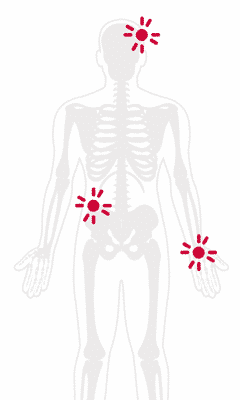
Fibromyalgia
Fibromyalgia, a complex pain disorder, is characterized by different symptoms, although primary indicators include musculoskeletal pain and tenderness.
This pain disorder amplifies any sensations of pain, and is predominantly experienced in the back, neck, abdomen, or muscles. Pain levels can vary from sharp to severe to chronic, and is often experienced in different regions of the body.
Common symptoms of the condition of fibromyalgia include:
- Anxiety and depression
- Severe mood swings
- Loss in memory
- Sleep disorders
- Muscle spasms
- Constipation
- Soreness
- Nausea
- Lack of concentration
- Tingling sensations
- Headaches
- Sensitivity
- Stiffness
- Fatigue
There is no identifiable cause of fibromyalgia, and it remains incurable. However, symptoms can be reduced with different therapies and medications.
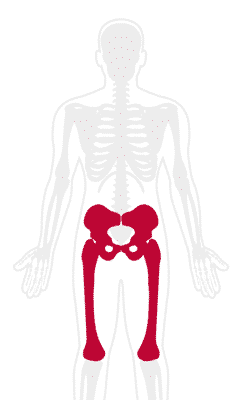
Hip Pain
Pain experienced in the hip region can occur for a variety of reasons, such as aging, disease, or trauma. Hip pain predominantly affects people in their 50’s and 60’s; and can range in severity from mild and moderate to acute and chronic, if left untreated.
The causes of hip pain are diverse:
- Conditions such as arthritis and bursitis
- Hip sprain or strain
- Muscle stiffness
- Postural issues
- Overuse
- Bone cancer / Osteonecrosis
- Gynecological issues
- Back issues
- Fractures
- Swelling
Hip pain is usually managed with rest, application of hot/cold packs, and simple, over-the-counter medications and painkillers such as ibuprofen.
If your pain lasts longer than a few days, contact Advanced Pain Care immediately to understand your pain treatment options if you have the following symptoms or signs:
- Swelling in the joints
- Tenderness
- Soreness
- Redness
More advanced treatment can include physical therapy, injections and surgery if necessary. Total hip replacement is a very successful procedure in advanced hip joint disease.
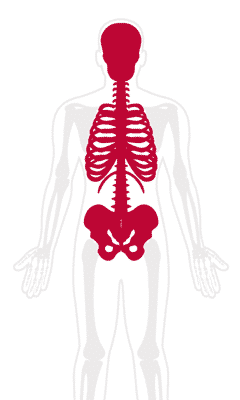
Interventional Pain Management
Interventional pain management is a related discipline of pain management specializing in the diagnosis and treatment of chronic pain and related disorders. This minimally invasive procedures can be used to treat chronic low back pain, chronic neck pain, malignancy, stenosis, and numerous other related pain.
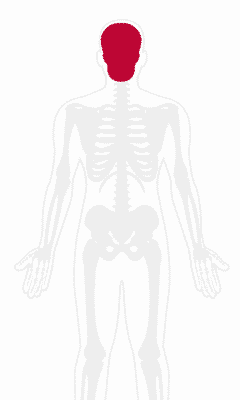
Migraine & Headache
Headaches are a common aliment that affects a wide range of people for many different reasons. These reasons can include lack of sleep, an upset stomach, a skipped meal, or something more specific such as alcohol/drug use or stress and anxiety.
Headaches caused by tension can cause an ache and pressure in the temples and the forehead, and cause disturbances in sleep. A more debilitating type of headache that occurs in a specific portion of the head is known as a “cluster headache.” Rare forms of headaches include trigeminal neuralgia headache and hemicrania continua.
Migraine is also a common type of headache that, depending on the cause, is felt as dull aches or blinding episodes of pain. These types of headaches can also be far more severe. They are said to be caused by environmental factors (such as the consumption of a specific types of food or exposure to loud sounds/bright lights) and can cause the following symptoms:
- Sensitivity to light and sound
- Difficulty in concentration
- Severe pain
- Nausea
- Blurred vision
- Numbness
- Neck pain
- Tingling
Migraines are treated at Advanced Pain Care with a variety of options including medication, botox, physical therapies, and, in more severe chronic cases, nerve blocks.
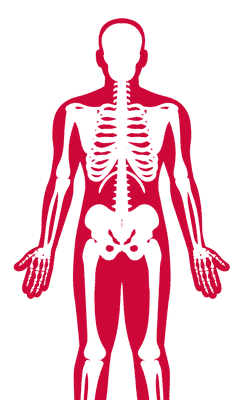
Musculoskeletal Pain
Some of the most common conditions of musculoskeletal pain, include carpal tunnel syndrome, epicondylitis, sciatic pain, tendonitis, fibromyalgia, and bursitis.
The cause(s) of musculoskeletal pain can be varied, such as:
- Sensitivity to light and sound
- Difficulty in concentration
- Severe pain
- Nausea
- Blurred vision
- Numbness
- Neck pain
- Tingling
Symptoms can vary from aches, pain, tenderness, feeling of the muscles being pulled, to decreased range of motion.
Treatment options at Advanced Pain Care can include physical or occupational therapy, heat/ice application, relaxation and biofeedback techniques, medications, and nerve blocks.
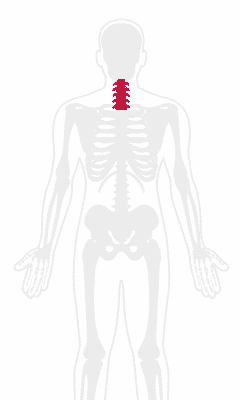
Neck Pain
Neck pain (or cervicalgia) also affects a large percentage of Americans and is primarily caused by degeneration of the cervical spine. Other causes can include poor posture, stress, poor sleep, trauma, or age-related conditions.
Symptoms and pain levels of neck pain vary from person to person and is usually dependent on the underlying cause of the pain.
- Pain radiating into upper extremities
- Stiffness (reduced range of motion)
- Tenderness
- Pain
- Blurring of vision
- Headaches
- Dizziness
- Fatigue
Neck pain can be treated at Advanced Pain Care in different ways depending on the severity and the underlying causes.
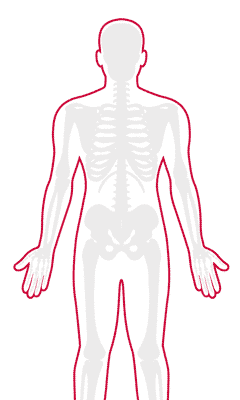
Neuralgia & Neuropathy
Neuralgia (or neuropathy) are conditions that occur when the nerves in the peripheral nervous system are damaged or destroyed. Two common forms of neuralgia are shingles and trigeminal neuralgia.
Some of the most common reasons for neuralgia or neuropathy include:
- Metabolic disorders
- Poor nutrition
- Alcoholism
- Diabetes
- Infections
- Tumors
- Trauma
Pain, numbness, and tingling are often constantly experienced in the hands and the feet of those experiencing neuralgia. A light touch or pressure around the area of the damaged nerve can be excruciating. In serious cases, sufferers may experience paralysis of certain muscles associated with the damaged nerve.
When left untreated, neuropathy (or neuralgia) can have serious health impacts. Neuropathy can affect the motor nerves and sensory nerves, resulting in a loss of muscle movement and the ability to experience sensations.
Autonomic neuropathy can even involve internal organs, including the bladder, blood vessels, and heart. Depending on the reasons causing the condition, treatment options at Advanced Pain Care can vary from medications to the use of nerve blocking agents.
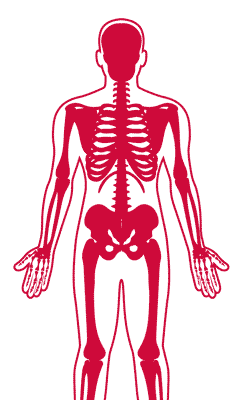
Post-Surgery Pain
Many patients report moderate to intense post-surgery pain. Patients can continue to experience pain for various reasons, such as surgical trauma or inflammation. At times, the pain can be in the form of discomfort or a dull ache, although it can also escalate into an acute condition.
It is completely normal for the surgical site to hurt for a few days following surgery, and temporary tissue swelling around the surgical site is normal. Persistent pain past after surgery beyond several days, however, is not normal.
Depending on the underlying causes, pain care specialists at Advanced Pain Care can prescribe medications, nerve blocks or even a spinal stimulator.
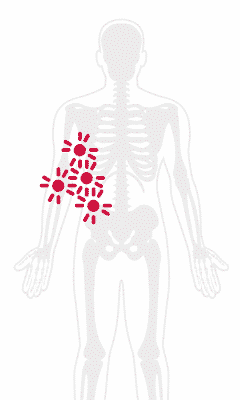
Post-Traumatic Pain
Physical trauma or injury can result in significant damage to your tissues and bones. Following a traumatic injury, mild to severe discomfort is normal. Chronic pain is also not unusual. However, if discomfort persists even after the right treatment was given, then it could be something more serious.
In many cases, those experiencing chronic pain following trauma suffer from a rare syndrome known as causalgia. Causalgia is a result of nerve damage caused by the trauma, which can often explain the persistence of pain even after the recovery process is complete. Pressure or compression of the nerve is sufficient to cause mild to severe discomfort.
Post traumatic pain can result in complex regional pain syndrome (CRPS), a type of nerve damage.
Common steps to treat post-traumatic pain could include the administration of over-the-counter pain relievers, antidepressants, or anticonvulsants. Depending on the intensity and circumstances, nerve-blocking injections, spinal cord stimulation, or electrical nerve stimulation may be advised by a pain care specialist at Advanced Pain Care.
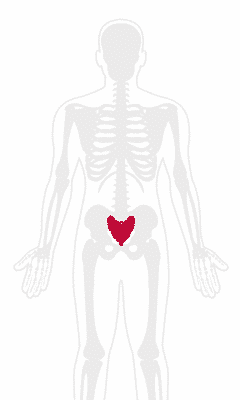
Sacroiliac Joint Pain
The sacroiliac joint is located between the sacrum (the bone at the base of the lower spine) and the ilium (the uppermost bone of the pelvis). The SI joint is mostly immobile, but it is very strong and vital for weight-bearing and support in the human body. Any dysfunction in the sacroiliac joint can cause severe pain in the region.
Some of the common reasons causing sacroiliac joint pain include:
- Arthritis, gout, ankylosing spondylitis, and psoriatic arthritis
- Natural wear and tear
- Pregnancy-related changes in the joint
- Stress on the cartilage
Pain is typically experienced as lower back pain, or pain in the hip, thigh, or groin. Radiating pain is also common. The pain is said to worsen with specific postures and movements and is often accompanied by stiffness and/or burning.
Physical therapy and pain medications are the first step used by Advanced Pain Care to treat the pain. If the condition persists or worsens, joint injections, radiofrequency denervation, electrical stimulation, joint fusion, and similar procedures may be recommended.
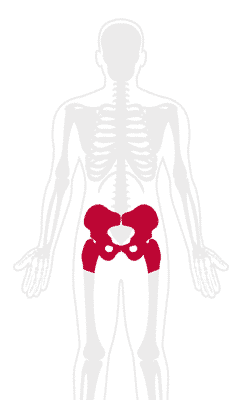
Sciatica Pain
The sciatic nerve is a large nerve running from the lower back to the buttocks and down the back of the legs to each foot. This nerve is responsible for controlling the muscles in the back of the legs and providing sensation to various parts of the legs. Sciatica pain can be caused by irritation, injury or pressure on the sciatic nerve.
Sciatica results from conditions such as:
- Lumbar Spinal Stenosis
- Lumbar Herniated Disc
- Injury
- Piriformis Syndrome
- Spondylolisthesis
- Trauma
Common symptoms include inflammation, discomfort, burning or tingling sensations, weakness or numbness or even shooting pains. Sciatica symptoms can be on one or both sides of the body.
Treatment for sciatica pain can include over-the-counter pain relievers, prescription pain medication, or physical therapy. In more severe cases, steroid injections or even surgery is considered. Surgery, as an option, is reserved only for cases where there is an accompanying loss of bowel/bladder control or significant weakness.

Spinal Stenosis Pain
Spinal stenosis is a condition where there is a narrowing of the spinal canal. Commonly occurring in the neck and the lower back, this condition occurs when there is pressure on the spinal cord or the nerves in the spine. The most common symptoms include:
- Loss of bowel/bladder control
- Muscle weakness
- Numbness
- Pain
The treatment plan proposed by your pain management specialist at Advanced Pain Care will depend on the location of the pain as well as the severity of the symptoms. The treatment plan could include the following:
- Medications
- Physical therapy
- Epidural steroid injections
- Surgical intervention
The most effective way of treating spinal stenosis via surgery is to relieve the pressure on the nerves or the spinal cord. Some of the most common surgical procedures include:
- Laminotomy
- Laminectomy
- Discectomy
- Interspinous process spacers
- Spinal cord stimulation
FAQS
Q: How is pain care at Advanced Pain Care clinic more holistic?
A: Pain care and management is complex because the underlying causes of the pain are so varied and unique per patient. Treatment options range from simple medication, physical therapies, alternative therapies and surgical and non-surgical interventions. Advanced Pain Care is a leading pain care and management provider in Texas with well-qualified pain care specialists and physicians.
We are a true multispecialty clinic with specialists in Interventional Pain, Neurosurgery, Rheumatology and Behavioral Health.
Q: How can I relieve my pain?
A: It is possible to relieve some pain by self-treatment and pain management techniques, like application of heat/cold packs, exercise, yoga, physical therapy and occupational therapy. If, however, the pain stays for more than a week, please contact the pain specialists at Advanced Pain Care at 512-244-4272 for medical assistance.
Q: What is the benefit of pain management?
A: By visiting a practice that specializes in pain care management, such as Advanced Pain Care, patients receive additional benefits like:
- Access to multiple pain care specialists who specialize in different types of pain. Also, specialists in Neurosurgery and Rheumatology
- Innovative techniques and state-of-the-art equipment for diagnostics and treatment of pain across multiple specialties
Q: What is the name of a pain doctor?
A: Pain medicine is a multidisciplinary effort involving different fields of medicine. Our pain doctors are board-certified in Interventional Pain Management, which means they are prepared to intervene or stop the pain process.
Q: What happens at pain management clinics?
A: The aim of pain management doctors is to manage acute or chronic pain and improve the quality of life for their patients. Pain management encompasses a lot more than just medication; it aims to give the patient a feeling of well-being and return to an active lifestyle without the constant need for medication.
Q: What drugs are used for pain management?
A: Over-the-counter pain relievers such as non-steroidal anti-inflammatory drugs as well as antidepressants and anticonvulsants are commonly prescribed to manage pain. If these are not effective, stronger prescription pain medication may be necessary.


